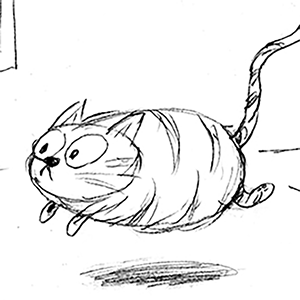My Pet World: Helping a dog feel safe and a cat breathe easier
Dear Cathy, I adopted a three-year-old longhaired dachshund mix about nine months ago. She came from a rescue after a traumatic start to life. She had been found chained to a tree with puppies and arrived fearful and sick. Over time, she adjusted and became very affectionate, and we even overcame her initial fear of walking and pottying outside.
However, about two to three months ago, she suddenly became afraid of the backyard again and refused to potty there. Now she’ll only go on walks to potty, holding it for 15 to 18 hours if I don’t take her out. I’ve tried positive reinforcement, walking her in the yard, treats, and encouragement, but nothing has worked. I’m in my 70s and worry about having to walk her late at night or in bad weather just so she’ll relieve herself. How can I help her feel safe in the backyard again – and go potty there?
— Cynthia, Virginia Beach, Virginia
Dear Cynthia,
I wasn’t able to include your full letter, but you’ve done an incredible job helping your little girl adjust. I’m not sure what might have scared her in the yard, but you’re on the right track by continuing to walk her there and pairing the experience with treats and positive reinforcement. Stick with it, even if progress is slow. As you work with her, watch closely to see if anything in the environment seems to trigger anxiety. You might be able to pinpoint what she’s afraid of.
In the meantime, I recommend trying a pheromone collar for the next 30 to 90 days. (These generally have to be replaced every 30 days.) These collars release calming pheromones that can ease anxiety in dogs. You can also try over-the-counter calming chews, available at most pet stores, to help her relax further. And consider using a pheromone spray in the yard or on your person to make things around her feel more secure.
While she’s wearing the collar and using calming chews, the next step is to retrain her as if she were a puppy. Take her outside after she eats, wakes up, or finishes playing. Keep these trips calm, brief, and consistent, with plenty of praise if she goes potty. Even if she doesn’t go at the time, this will help reestablish a routine and rebuild her confidence.
You’re already doing so much right, and I truly admire your dedication. With a little extra structure and patience, I’m hopeful she’ll start to feel safe again in her own backyard.
Dear Cathy,
My 11-year-old female cat developed a breathing issue about four months ago and no one seems to know what might be the cause or how to treat it.
After examining her, my vet prescribed a 10-day treatment of Veraflox, which seemed to alleviate the problem about half way through the treatment. Unfortunately, the labored breathing and wheezing came back a few days after ending the treatment.
Next my vet had me give her allergy relief pills, which had no effect other than turning her into a zombie. Following that, my vet had me try giving her Lysine, which I did for about 45 days with some minor positive results but did not really help overall.
I'm at my wits end. Any idea what might be the issue or what to do?
— Jim, St. Louis, Missouri
Dear Jim,
I know it’s so difficult to watch a beloved pet struggle to breathe comfortably, especially when answers are elusive. I’m not a veterinarian, so I can’t diagnose or recommend specific treatments, but I can say you’re doing all the right things by working closely with your vet and trying different options to find relief for your cat.
When a cat has ongoing respiratory issues that don’t respond well to typical treatments, it’s worth asking your vet about getting a referral to a veterinary specialist, such as an internal medicine specialist or veterinary pulmonologist (yes, they exist!).
These specialists have access to more advanced diagnostic tools, such as chest X-rays, CT scans, or even endoscopy, that may help uncover underlying conditions, including asthma, chronic bronchitis, nasal polyps, or heart-related issues that sometimes masquerade as breathing problems.
Some cats develop allergies to things in their environment, so pay close attention to potential triggers in your home – such as dusty litter, air fresheners, scented candles, or even seasonal pollen. Using a HEPA air filter, switching to a low-dust, unscented litter, and avoiding scented candles and essential oils may help if her condition is allergy-related.
I hope you find answers soon and that your sweet girl starts breathing easily again.
_____
_____
========
(Cathy M. Rosenthal is a longtime animal advocate, author, columnist and pet expert who has more than 25 years in the animal welfare field. Send your pet questions, stories and tips to cathy@petpundit.com. Please include your name, city, and state. You can follow her @cathymrosenthal.)
©2025 Tribune Content Agency, LLC.
(c) 2025 DISTRIBUTED BY TRIBUNE MEDIA SERVICES, INC.












Comments